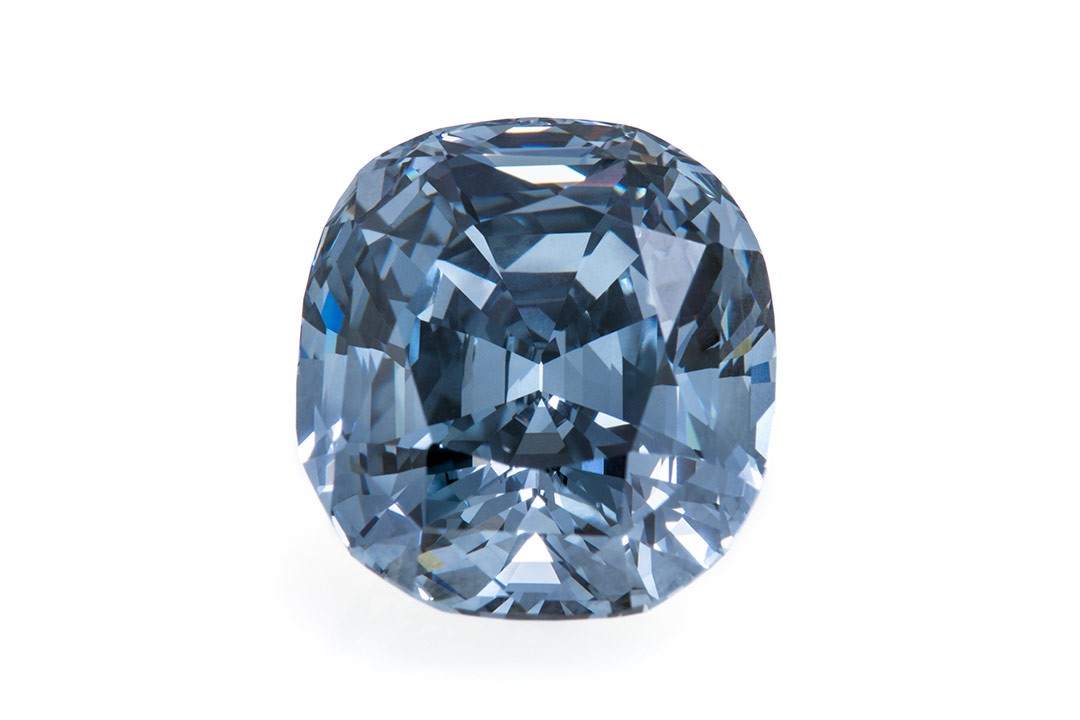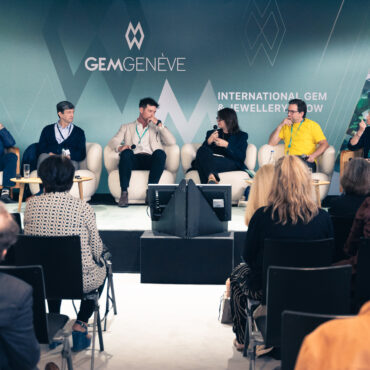
Image: Shirley Temple Blue Bird diamond, Windsor Jewelers
Provenance can enhance the value of extraordinary jewels enabling the owner to possess a unique piece of history or to prize an exceptionally rare origin.
At the coming edition of GemGenève (May 9-12, 2019) some pieces of jewellery and gemstones have an unusual story of ownership or origin which will make them even more desirable.
“Historical provenance (an emerald brooch belonging to Liz Taylor, for example) and geological origin (a Burmese ruby from the legendary mines of Mogok) can rocket standard quality criteria through the roof and create world record results for already gorgeous gems,” said Helen Molesworth, managing director of Gübelin Academy.
At GemGeneve, a superb blue diamond that will be showcased by Windsor Jewelers, will be the Shirley Temple Blue Bird, a more-than-9-carat fancy deep blue, internally flawless diamond.
It has superb provenance as it once belonged to the Hollywood child star, increasing its appeal.
Exhibitor Pat Saling will present some exceptional pieces with a unique history.
She is showcasing a necklace designed by Juliette Moutard of the house of Rene Boivin for Madame Louise de Vilmorin.
Louise de Vilmorin was a famous French novelist, poet and journalist. She was born in the family chateau outside of Paris. She wrote several novels and received the Renee Vivien prize for women’s poets in 1949.
She was also known as a woman of great taste and sophistication. In the Boivin book, Jeanne Boivin described her as one of their favourite clients who wore jewellery with great elegance.
She had two husbands, the first an American real estate heir, the second a Count described as a Hungarian playboy, and was the mistress of a British Ambassador to France and the companion of the French Cultural Affairs Minister.
The necklace itself was designed from an older platinum and pearl sautoir that Moutard then updated with coloured stones set in gold and accented with diamonds to be a more exciting piece of jewellery and be more in keeping with the style of the times.
“Most of the time we do not have the provenance of a piece of jewellery for a variety of reasons,” Pat said.
“But when we can trace a piece of jewellery back to an owner it is always an important piece of information and does add to the allure of a piece of jewellery.
“As with this necklace, the fact that we know it belonged to a woman who was considered a woman of great taste, who had a large jewellery collection and was recognized by her generation and subsequent generations, is icing on the cake.
“People like to own a little piece of history and when you know that a piece of jewellery was part of an important collection it adds to the value of that piece.”
Pat Saling is also presenting an important cabochon sapphire and diamond ring in platinum created by celebrated designer Suzanne Belperrron and dating to about 1940.
Belperron had an amazing and recognizable style which was sought after by the wealthy and elegant women of her generation.
Her clients included the Duchess of Windsor, Chanel, Diana Vreeland, Daisy Fellowes, and Elsa Schiaparelli to name a few.
Her jewels were often featured in French and American Vogue, Harper’s Bazaar and used by the great fashion houses of the day to accessorize their collections.
“The important provenance of this ring is that it was in the personal collection of Suzanne Belperron and that adds to its mystique and its value,” Pat said.
“Here is a designer who can have anything she wants since she is designing the jewellery and this ring is one of the pieces that she chooses to be her personal ring. That kind of validation is rare because usually the creator of a piece of art or jewellery is making it for someone else.
“But this ring is a piece that she chose to own herself. It was exciting for me to know this when I bought it. It will always make this particular ring be more desirable to have been part of a great designer’s personal collection.”
In terms of gemstones, Richard Haruni of Haruni Fine Gems says provenance is a major factor for him when buying and selling gems.
“Origin above all else will be the factor that will set two seemingly identical stones apart,” he says.
“You see this in pretty much every variety of gemstone whether it’s ruby for Burma and Mozambique, sapphires for Kashmir/Burma/Sri Lanka/Madagascar (in that order), emeralds with Colombia and Zambia and now Ethiopia, or specialist stones like Paraiba tourmalines from Brazil, pink or red spinels from Burma or Australian Opals.
“Let’s not forget the premium fetched by Argyle pink diamonds and type II Golconda. Origin sets them apart.”
Anne Wild of Paul Wild speaks of the importance of Brazilian origin in setting the highest premiums for Paraiba tourmalines.
“The provenance of a gemstone is getting more and more important. This means for high quality/value of rare gemstones like ruby, sapphire, emerald — and not to forget Paraiba tourmaline.
“Paraiba tourmaline has been our bestselling stone for years and here the origin of Brazil has become more crucial.”
Bruno Scarselli of Scarselli Diamonds said that as a diamond manufacturer he would interpret “provenance” as “origin.”
“In the diamond industry awareness of ‘origin’ would permit someone like me to recognize certain manufacturing aspects which would allow for better colour outcome when cutting a rough stone,” he says.
Ingo Henn of Henn of London says it is vital to authenticate the provenance of a piece to add value.
“It is important to be able to verify the item — otherwise people can claim any provenance,” he says.
“It will certainly add to the desirability and value. Even more so if there’s connection with a very famous person.
“Gemstones can have their own history and personality, both of which can be enhanced with their provenance. “
The top lot in the Sotheby’s “magnificent jewellery” sale last November, a pearl and diamond pendant that belonged to Marie Antoinette, achieved a world record price for a pearl of $36 million — some 20 times its pre-sale estimate.
The extraordinary provenance of this pearl – its ties to the ill-fated last Queen of France before the French Revolution, an Austrian Archduchess who married the future King Louis XVI and was executed by guillotine – was a key driver of the sale price.
An anonymous private buyer bought the jewel for a startling world record price of $36 million for a pearl, a huge premium over its pre-sale estimate of $1-2 million.
The extraordinary price garnered for the pendant was very much due to its exceptional royal provenance – the fact that the Queen of France had held this piece in her own collection shortly before her execution centuries ago.
“Because of its size, rarity and quality, the commercial value of such a pearl can be estimated to be between three to five million Swiss francs,” said Thomas Faerber, a co-founder of GemGeneve.
“The rest is historical value. In my opinion, the final price is also a world record for historical jewellery at auction.”
People who handled the pendant in the days before the Sotheby’s sale felt a little bit as though they possessed a moment of that history – a strange feeling, like being pushed back hundreds of years. A sense of grandeur – with a feeling of unique emotions.
“It is extremely difficult to calculate how much the provenance will add to the value of a piece of jewellery, and in this case much of the price achieved for the pearl pendant was due to its story relating to Marie Antoinette,” said Daniela Mascetti, Chairman Jewellery Europe of Sotheby’s.




